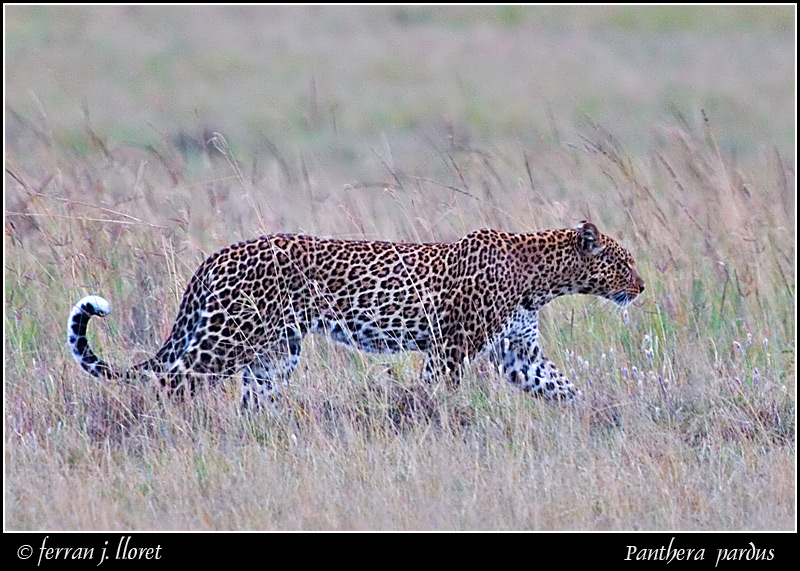The leopard (Panthera pardus) is one of the four 'big cats' of the
genus Panthera. Originally, it was thought that a leopard was a hybrid
between a lion and a panther, and the leopard's common name derives
from this belief; leo is the Greek and Latin word for lion (Greek leon,
λέων) and pard is an old term meaning panther. In fact, a "panther" can be any of several species of large felid. In North America, panther means puma and in South America a panther is a jaguar. Elsewhere in the world a panther is a leopard. Early naturalists distinguished between leopards and panthers not by colour (a common misconception), but by the length of the tail - panthers having longer tails than leopards.
The big cats, especially the spotted cats, are easy to confuse for those who see them in captivity or in photographs. The leopard is closely related to, and appears very similar to, the jaguar; it is less often confused with the cheetah. The ranges, habitats, and activities of the three cats make them easy to distinguish in the wild.
Since wild leopards live only in Africa and Asia while wild jaguars live only in the Americas, there is no possibility of confusing them in the wild. There are also visual markings that set them apart. Leopards do not have the spots within the rosettes that jaguars always have, and the jaguar's spots are larger than the leopard's (see the photographs in jaguar). The Amur leopard and the North Chinese leopard are occasional exceptions. The leopard is smaller and less stocky than the jaguar, although it is more heavyset than the cheetah.
Besides appearance, the leopard and jaguar have similar behavior patterns. Jaguars can adapt to a range of habitats from rainforest to ranchlands while leopards are even more adaptable ranging in from deserts and mountains, savanna and woodlands.
Although it is not unusual for a leopard to be mistaken for a cheetah due to their frequently overlapping ranges, they can actually be easily distinguished. The leopard is heavier, stockier, has a larger head in proportion to its body, and has rosettes rather than spots. It also lacks the ring pattern that marks the end of the cheetah's tail and the black, "tear-drop" markings that run from the inner corners of the cheetah's eyes to the corners of its mouth. Additionally, cheetahs run much faster than leopards do and do not climb trees, except while they are cubs, whereas leopards are excellent climbers. Also, leopards are more active at night (nocturnal), whereas cheetahs are usually diurnal.
Information source
IUCN information
Photographed in dry grassland of the Nakuru Lake National Reserve, Juliol de 2006.
|
